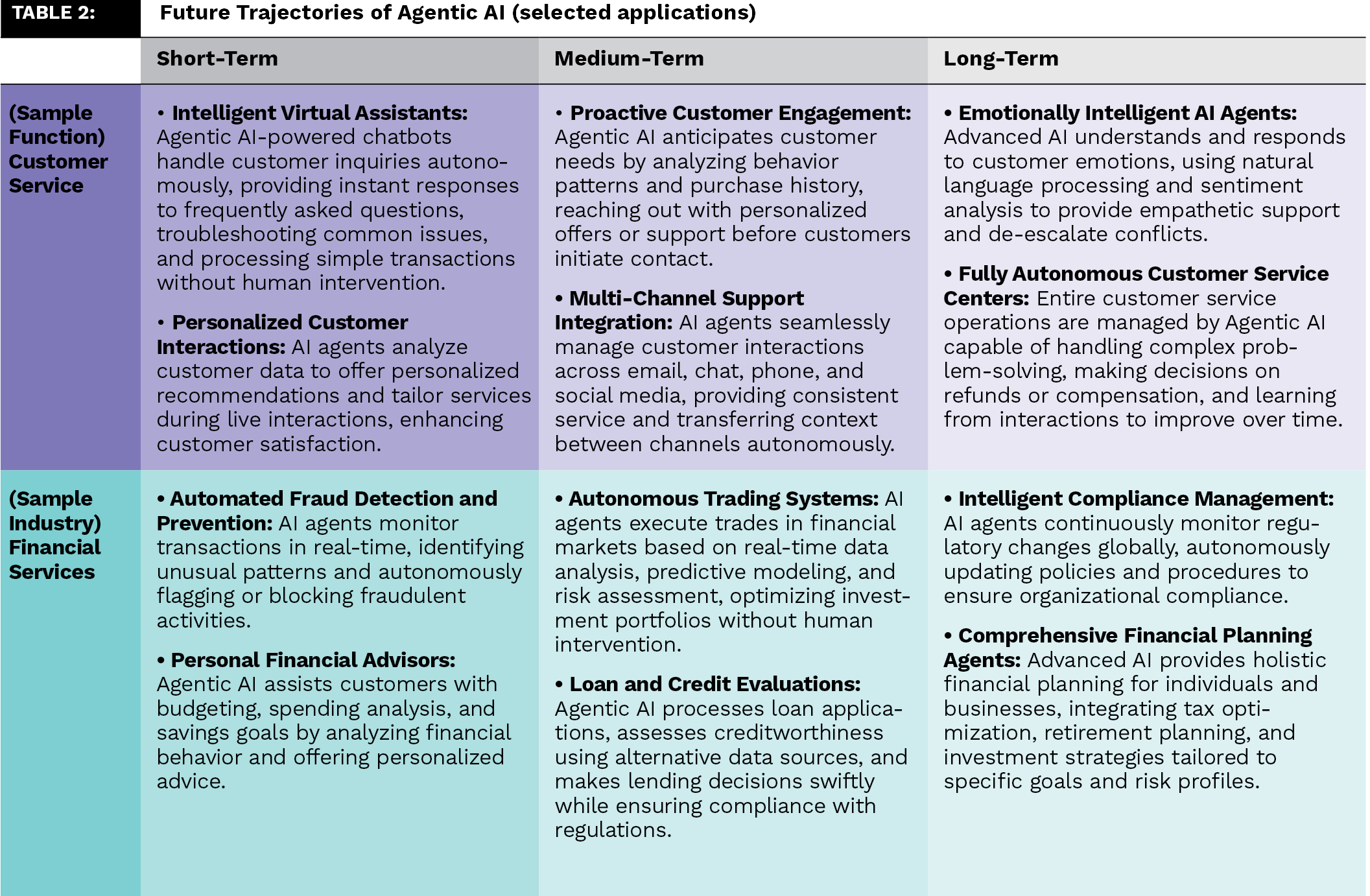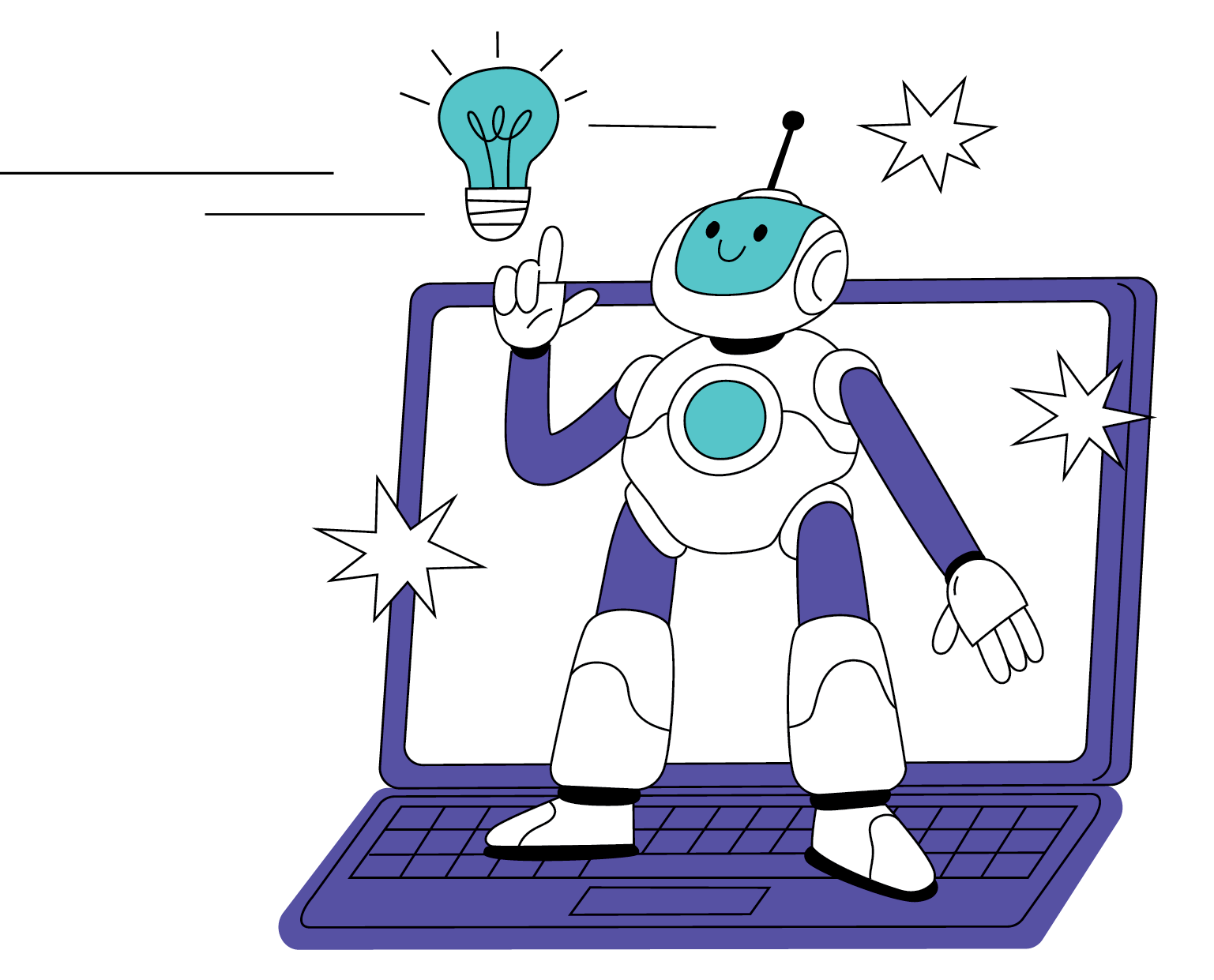By Alessandro Lanteri and Mark Esposito
The rapid development of AI technology has brought in agentic AI systems with the ability to be autonomous and make independent decisions. This will redefine how organizations work and create a solid global economy.
In an era where artificial intelligence is rapidly transitioning from simple automation to sophisticated autonomy, the advent of agentic AI marks a pivotal shift in the technological landscape. Agentic AI systems, characterized by their ability to make independent decisions and act autonomously without continuous human oversight, are poised to revolutionize industries and reshape the workforce. For example, Nvidia CEO, Jensen Huang wants the company to grow to 100 million employees, the majority of which will be digital agents.
This is not merely a speculative vision of the future. Nvidia is already using some of these digital employees to design chips and develop software. Elsewhere, AI agents are also employed by AT&T to detect fraud and optimize network usage and by The Ottawa Hospital to improve patient experience and reduce administrative burden.
As these autonomous agents become increasingly capable of performing tasks that once required human supervision, next-generation enterprises will emerge that are autonomous, scalable, and networked and will surpass conventional models.
Next-Generation AI
This new generation of virtual employees is fundamentally different from the first-generation AI expert systems of the 1950s, the second-generation machine learning models of the 1990s, and even the latest generative AI developments like ChatGPT or DALL-E4. These advanced systems represent a new kind of artificial intelligence known as agentic AI because they possess agency (sometimes referred to as ‘agenticness’)5 — the capacity to perceive their environment, reason about complex situations, make decisions, and execute actions to achieve specific goals without continuous human supervision. Designed to act independently, these AI agents learn and adapt through their interactions and experiences.
Agentic AI operates through a four-step process for problem-solving:
- Perception: AI agents begin by gathering and processing data from various sources, including sensors, databases, and digital interfaces. This step involves extracting meaningful features, recognizing objects, and identifying relevant entities within their environment.
- Reasoning: A foundation model functions as the reasoning engine. It understands tasks, generates solutions, and coordinates specialized models tailored to specific functions such as content creation, image processing, or recommendation systems.
- Action: Agentic AI integrates external tools and software in order to execute tasks based on the plans it has devised. To ensure tasks are performed correctly, guardrails can be established. For example, a customer service AI agent might be authorized to process claims up to a certain amount, while claims exceeding that threshold would require human approval.
- Learning: Agentic AI continuously enhances its performance through a feedback loop. The data generated from the AI’s interactions is fed back into the system to refine and improve its models. This ability to adapt and become more effective over time empowers businesses to drive better decision-making and operational efficiency.
For example, in the financial sector, an agentic AI could analyze market trends, adjust investment portfolios in real-time, and execute trades independently to maximize returns while managing risk. These same tasks are still performed by people in some financial boutiques and by people supported by AI in larger financial institutions. The key distinction between agentic AI and other forms of artificial intelligence lies in autonomy and capacity for independent action (table 1).

Strategic Advantages of Agentic AI
The long-term promise of any technology depends on its ability to confer some unique competitive edge. Agentic AI indeed offers strategic advantages that go beyond traditional AI systems, by expanding some of the known benefits of AI — operational efficiency and cost reduction — and empowering new benefits — improved decision-making and scalability and flexibility.
- Operational efficiency. Agentic AI can autonomously handle intricate, multi-step processes that still require significant human intervention with current AI systems. This reduces the operational burden on employees and ensures that critical services are maintained around the clock — because AI agents operate continuously without fatigue — and so improves overall productivity.
- Cost reduction. Automating tasks with agentic AI reduces labor costs and minimizes errors, leading to savings. Agentic AI optimizes the use of resources such as materials, energy, and time, contributing to cost-efficiency and sustainability goals.
- Improved decision-making. Agentic AI can process vast amounts of data in real-time, providing immediate insights and enabling quicker, more informed decision-making. This leads to better strategic alignment and responsiveness to market dynamics.
- Scalability and flexibility. Agentic AI systems can adjust in real time to changes in the environment, market conditions, or organizational strategies, ensuring optimal scale, continuity, and resilience. They can be scaled up or down on demand, in a similar fashion to scaling cloud computational power, without the delays associated with recruiting and training new staff.
The strategic benefits of agentic AI are compelling. Moreover, though developing agentic AI is expensive, deploying it is “effortless”8. Therefore, as soon as agentic AI services become available, businesses will rush to adopt them.
Trajectories of Agentic AI
With widespread adoption, agentic AI will gather data that accelerate its performance (table 2) and therefore magnify its impact on organizations and workers.

Short-term evolution
In the immediate future, agentic AI applications will look like refinements of the current AI trends toward operational efficiency, achieved by automating routine and repetitive tasks. AI agents will handle administrative duties such as data entry, scheduling, and basic customer service inquiries. Early adopters in sectors like manufacturing, logistics, and healthcare will leverage agentic AI for tasks such as predictive maintenance, supply chain optimization, and patient monitoring.
Medium-term transformation
As agentic AI matures, its integration into organizations will become more profound. In the medium term, job roles and organizational structures will be transformed. AI agents will take over tasks that feel complex to humans. Decision-making processes will evolve. For example, agentic AI will contribute to strategic planning by simulating scenarios and forecasting trends with a level of speed and accuracy unattainable by humans alone. Organizations will restructure to maximize the benefits of agentic AI, adopting flatter hierarchies and more agile team configurations. Finally, the workforce will undergo significant changes. While some traditional jobs may diminish, new roles centered around AI — such as AI ethicists, strategists, and maintenance specialists — will emerge. Continuous learning will become imperative as employees must adapt to rapidly evolving technologies.
Long-term disruption
In the long term, agentic AI is anticipated to fundamentally disrupt entire industries and redefine the nature of work and organizational structures. Visionaries like OpenAI CEO Sam Altman have envisioned scenarios where companies could grow to unicorn status under the management of a single individual9. With agentic AI, one-person unicorns will become the norm in certain sectors. Autonomous operations will empower disruptive business models, with AI agents managing core functions with minimal or even no human oversight. For example, in industries such as transportation, the widespread adoption of fully autonomous vehicles and logistics networks could revolutionize mobility and supply chains. As market conditions evolve, agentic AI systems will dynamically scale to meet demand. Nvidia CEO Jensen Huang has predicted that “AI’s will recruit other AI’s to solve problems” , highlighting a future where autonomous AI agents work together to address complex challenges without human supervision.
Next-Generation Enterprises: Autonomous, Scalable, and Networked
Historically, humans with human intelligence have designed jobs for humans, leveraging human skills and coordinating tasks that humans can perform. As technology evolves, it has been incorporated into these tasks and their organization, gradually refining jobs over time. Presently, humans still play a critical role in hybrid work systems built on collaborative intelligence, where tasks at which humans excel are intelligently integrated with those at which machines excel, achieving performance levels that would otherwise be impossible.
As agentic AI masters new skills, future tasks may be redesigned by AI agents within agentic meshes in a way that could potentially eliminate human involvement altogether or relegate humans to serving as inputs within machine-first systems of value creation.
Over time, however, AI agents will eventually “find each other, collaborate, interact, and transact” in an interconnected ecosystem, which can be called an “agentic mesh”. Interconnected AI agents can exchange data, insights, and resources in real-time, creating a dynamic network that functions as a cohesive whole. This interconnectedness allows for seamless coordination and optimization of complex systems without human supervision. As agentic AI masters new skills, future tasks may be redesigned by AI agents within agentic meshes in a way that could potentially eliminate human involvement altogether or relegate humans to serving as inputs within machine-first systems of value creation.
The original logic of a one-person unicorn may have been that one human can supervise and control AI performing the tasks humans would perform. That too might evolve into a system where AI agents supervise tasks that other AI agents would perform.
The emergence of agentic AI is set to revolutionize the business landscape by empowering next-generation enterprises that are autonomous, scalable, and deeply networked.
Autonomous. Agentic AI autonomy allows enterprises to operate with greater agility and responsiveness. For example, in the manufacturing sector, autonomous AI agents can oversee production processes, adjust parameters in real-time to optimize efficiency, and predict maintenance needs to prevent downtime — all without direct human intervention. This leads to higher productivity and the ability to adapt swiftly to changing market demands or unforeseen disruptions.
Scalable. The scalability of next-generation enterprises is greatly enhanced by the capacity of agentic AI to handle vast amounts of data and manage complex operations efficiently. AI agents can be replicated and deployed across multiple functions and regions without the limitations inherent to human labor. As business requirements grow, enterprises can scale their operations seamlessly by deploying additional AI agents, ensuring consistent performance and quality. This scalability is not only vertical but also horizontal, allowing enterprises to expand into new markets or add new services rapidly. For instance, in customer service, AI agents can handle increasing volumes of customer interactions simultaneously, providing personalized support to a global customer base without the need for proportional increases in human staff.

Networked. Agentic AI also fosters the development of networked enterprises, where businesses are interconnected through AI agents that collaborate and communicate across organizational boundaries. These networked enterprises leverage agentic AI to form dynamic ecosystems that facilitate real-time data exchange, shared insights, and coordinated actions. In such an ecosystem, AI agents from different companies can interact to optimize supply chains, align production schedules, and respond collectively to market trends or disruptions. For example, in the logistics industry, AI agents representing manufacturers, distributors, and retailers can synchronize their operations to ensure timely deliveries, reduce inventory costs, and enhance overall efficiency.
Conclusion
The autonomous, scalable and networked nature of the next generation of enterprises enables the creation of a complex web of AI agents that continuously communicate, learn from each other, and adapt their behaviors accordingly. This interconnectedness enhances the ability of enterprises to innovate and respond to changes collectively. Innovations and best practices discovered by one AI agent can be quickly disseminated across the network, benefiting all connected entities. This results in a highly adaptive business environment where enterprises are not isolated entities but integral parts of a larger, intelligent network.
Moreover, the combination of autonomy, scalability, and networked operations allows next-generation enterprises to implement radically innovative business models. Organizations can operate with leaner structures, reducing overhead costs associated with large human workforces while maintaining — or even improving — service quality and operational efficiency. Resources previously dedicated to routine tasks can be reallocated to strategic initiatives, research and development, and enhancing customer experiences. Additionally, the networked approach opens up opportunities for collaborative value creation, where enterprises co-develop products or services, share resources, and enter new markets collectively.
By embracing agentic AI, next-generation enterprises can operate more efficiently, innovate rapidly, and collaborate effectively within interconnected ecosystems. This new paradigm redefines how businesses function, fostering a dynamic and cooperative global economy where the collective capabilities of networked enterprises unlock unprecedented opportunities for growth and value creation.




 Dr. Alessandro Lanteri
Dr. Alessandro Lanteri Dr. Mark Esposito
Dr. Mark Esposito
































